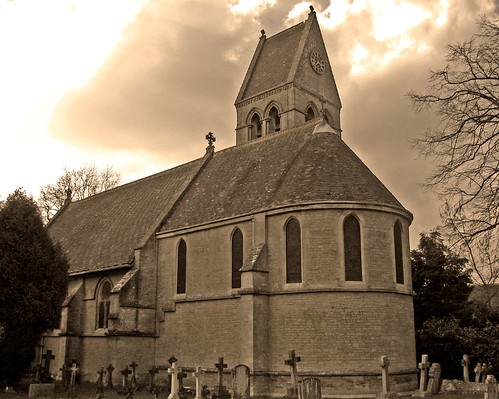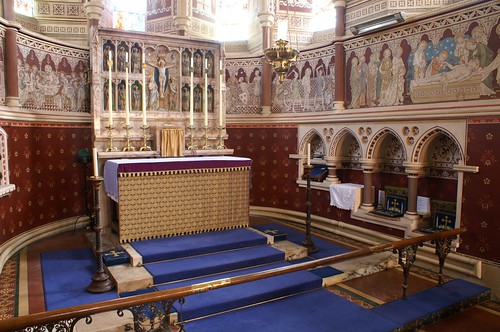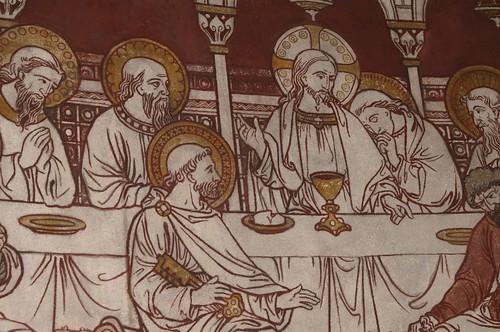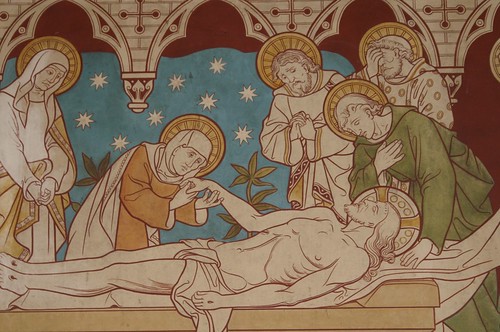Clayton and Bell at Freeland

Photo by Lawrence OP
The church of St Mary in Freeland, Oxfordshire was designed by J L Pearson in the Early English style. It was constructed between 1869 and 1871 at the expense of the Taunton family. The church has an exquisite and remarkably well-preserved Tractarian interior, with lavish contemporary decoration. The apsidal chancel has a decorative scheme by Clayton and Bell, including stained glass and a rich series of wallpaintings.

Polychromy covers every inch of the chancel walls. Below the dado the walls are painted in a vibrant red ochre, which is powdered with stencilled devices. Above that are a series of narrative panels depicting the passion of Christ, painted in an ochre grisaille. In some of the panels this ochre grisaille is relieved with muted yellow ochre and pastel green and blue. The two central panels of the north and south wall, Christ's entry into Jerusalem and his burial, get a more vibrant treatment, with Clayton and Bell adding richer blues and greens.

Christ crowned with thorns

The scourging of Christ

The Last Supper

The entry into Jerusalem

The entry into Jerusalem

The burial of Christ
The stained glass in the chancel follows the theme of the life of Christ, with windows depicting the Nativity. I don't have any pictures of them, but Lawrence Lew has an excellent selection on his Flickr page, taken when we visited the church together last year.
Comments
Many complain about them, but consider how impoverished the churches would be without their work.
At some point soon I will be going over to Garton on the Wolds to photograph the wallpaintings there. Watch this space.
ps Will attempt to remember to post under my own name, but occasionally, when I am logged in to it and absent-minded, my rabbit persona intrudes, but we are one and the same.
There was quite a lot of outrage when this church was constructed, most of it directed against the image of Our Lady and the Blessed Infant above the south porch.